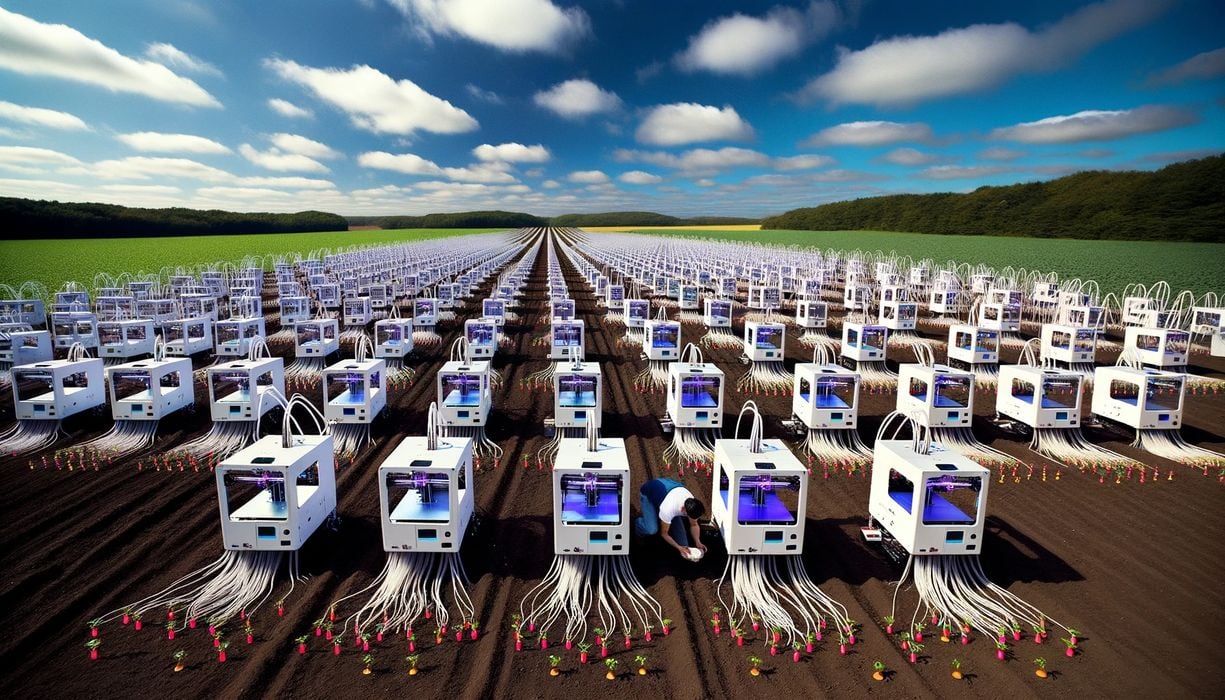
What would be the key things to look for when choosing a desktop 3D printer for series production?
Many readers will have 3D printers on hand, and most of them will be used for prototyping. But what if you have a part or two that needs to be continually produced? What if, say, you have an Etsy store marketing your cool designs and suddenly one of them goes viral?
The first and easiest answer is to simply buy another device that’s the same type as your original 3D printer. That would ensure similar print quality and allow for one device to fail while still continuing, albeit with reduced throughput.
But then what happens if demand grows? Should the same 3D printer be acquired over and over as business grows? Perhaps one should step back and take a look at the options, and consider the following criteria.
Reliability
Reliability might be the most important factor: if the machine breaks a lot, you’ll be spending time fixing it, instead of it producing products. Remember, when you have a production machine the goal is to run it as much as possible. This is quite unlike a prototyping machine where it runs jobs only occasionally.
Look for machines and printer manufacturers with a good track record of reliability, and by extension, avoid those with negative reputations.
Repairability
As much as one would hope, 3D printers invariably fail from time to time. The idea here is to select a machine model that is relatively easy to repair. A quick repair means the machine is back in service as fast as possible.
Look for machines that have spare part availability and good support services.
Alternatively, consider buying an extra machine to keep in reserve. It would be fired up if one of the normal batch fails in order to maintain production throughput.
Speed
Print speed is a very important factor, and it’s only recently become important. In the past most desktop FFF 3D printers operated at a single speed: slow. But in the past year a number of machines boast of “high speed” 3D printing that can print parts at two, three or even five times faster than older devices.
A single high speed printer that runs 5X faster is equivalent to buying FIVE slow 3D printers. If the goal is throughput, then a high speed 3D printer is a must.
Compatibility
Your parts might have to be produced with specific colors or material types. Because of this it’s worth checking to ensure the selected machine can handle the required materials. Does it print TPU? Some machines do not — or do not do so as reliably as other materials.
Another compatibility factor to evaluate is the spool capability. Not all spool holders are the same, and some require very specific spool and hub diameters to work. If your application requires specific materials that have oddball spools, you’d better check to make sure they fit.
Software
It’s easy to launch print jobs on one machine, but far more complex when you have a squad of machines. Very quickly you will get messed up if there are a long series of prints to dispatch on a bunch of machines. Which one is free? Where is the machine with the red material?
The answer here is to select machines that have an option for print farm software. This type of software can dramatically simplify efforts required to keep a print farm busy.
Some machines offer such software, but there are third parties that can also do the same. However, they don’t always work on all machines.
Monitoring
If machines are running 24/7, then you can’t sit by the machines to make sure everything is ok. Instead you need to have monitoring capability, preferably with cameras enabling remote monitoring. Many machines now include built-in cameras, but some do not. Imagine buying a dozen cheap machines only to discover you have no way of knowing whether the jobs are succeeding unless you’re in the room with them.
One approach is to use a set top box like OctoPrint to do so, with appropriate plug-ins.
Automation
Automation is going to be a requirement eventually for any print farm. There are various forms of automation that differ from manufacturer to manufacturer, but a solution should be selected. There are a few third party solutions available as well, such as 3DQue.
Automation can include AI-based quality control monitoring through the built-in camera, but some 3D printers and third parties offer automation for print plates. The print plates or parts can be ejected automatically, enabling the machine to proceed immediately to the next print job. That’s critically important to raise part throughput.
Availability
Is the machine available? What happens if you need a few more units? Can you buy them, or are they discontinued?
3D printers are notorious for going obsolete quickly because the technology is advancing so quickly. However, some printer manufacturers release new models every few months, making it challenging to maintain a consistent model within a print farm.
It’s best to consider the availability of each model to ensure you’re able to buy more if required within a reasonable time frame.
Cost
Finally, as always, we have the cost factor. The idea is to identify a list of machine options that meets the above criteria and then select the one that is available at the lowest cost.
This is challenging in recent times because the industry is in the midst of a price shift. Very powerful machines are emerging at the low end, putting pressure on the professional 3D printer market.
While the prices might be volatile, there’s been no better time to buy a powerful 3D printer than today.
Except for tomorrow.
